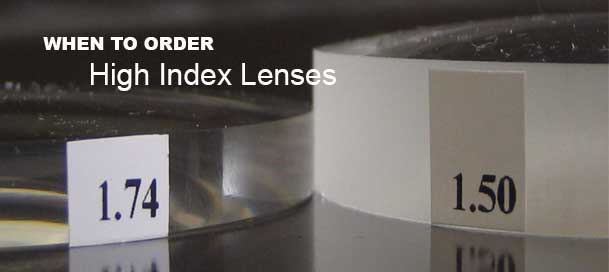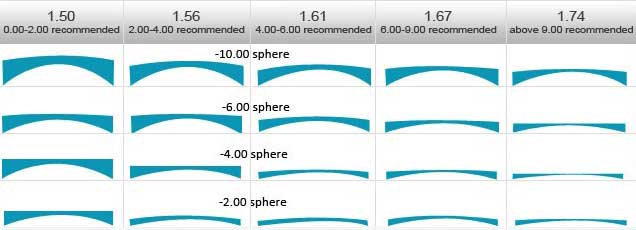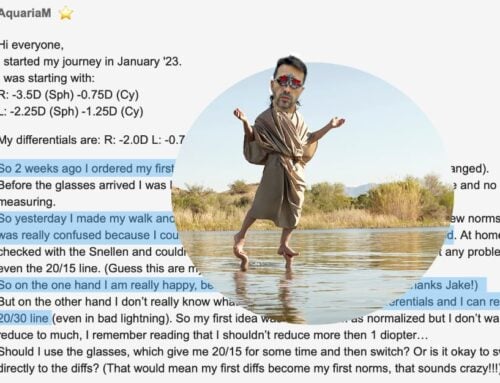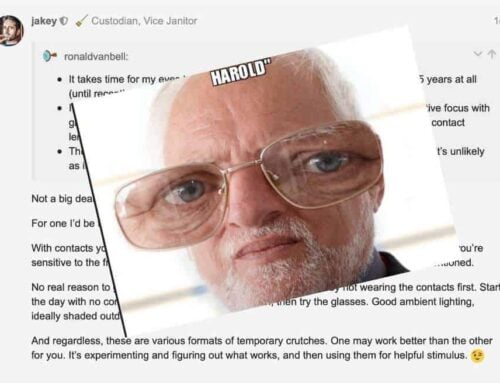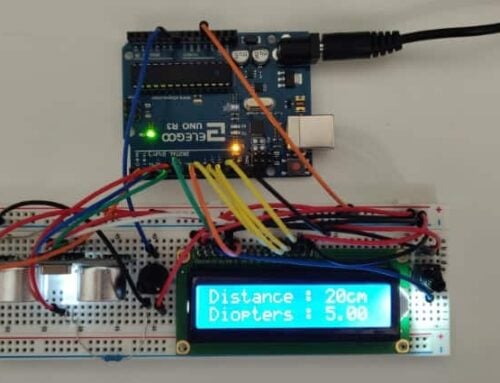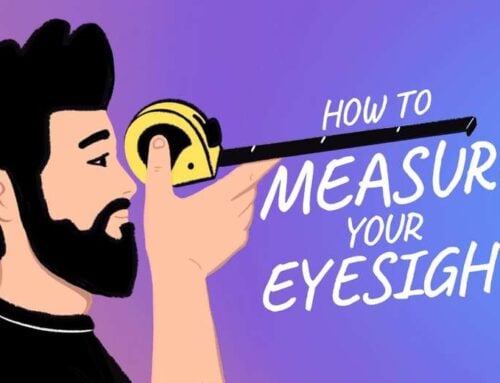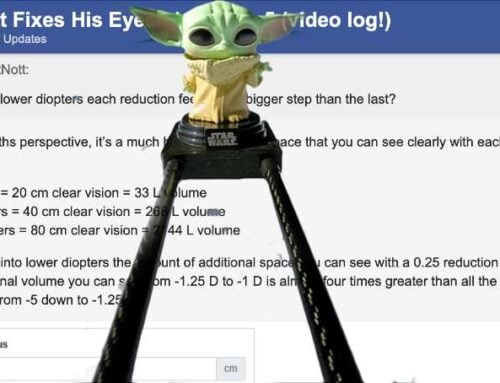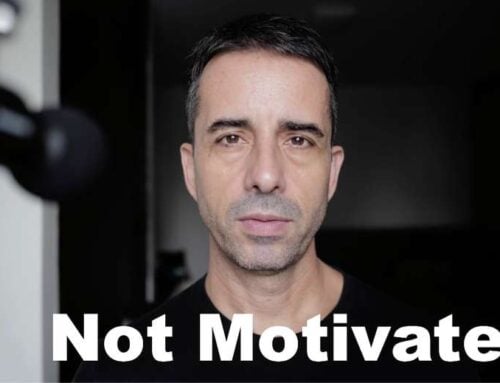The index question comes up, every so often, in my e-mail and sometimes in the forum. There are several factors to consider, how much you want to spend on lenses. Always keep in mind that higher index = better optical quality (thinner lenses, less distortion) – and lower index, conversely, is always cheaper.
First, there is the question of how often you will change your prescription:
If this is your first ever prescription change, you may want to keep things budget friendly. It’s quite possible that you will want to make a small adjustment – or you might be improving quickly, and need a new prescription again.
It is not unusual for first time program participants to change their first prescription after as little as 30 days.
For differential prescription (close-up), at low diopters (less than -3.00 diopters), you might opt to use lower index lenses. Bear in mind though, that if you spend many hours up-close every day, you don’t want much distortion anyway. Once you are familiar with the rate that your eyes improve, it will become easier to decide on index rating, based on your own budget preferences.
The higher the prescription, the higher index should be lens choices.
Glasses tend to get quite thick at high correction, especially some low index (1.50) lenses.
Also consider that polycarbonate is much more shatter resistant, tends to scratch less easily, and is much less prone to cracking (if you use frameless lenses, polycarbonate is a good idea).
At the same time, there is less need for high index, if you have a very low prescription. Zenni, as example, sells very high index lenses (1.74) for about 80 USD upgrade cost. If you are already at -2.00 diopters or less, spending the extra money will make no noticeable difference for you. A mid index 1.57 is plenty in this -2.00 diopter scenario. Consider also that you will likely not wear those glasses for more than a few months, if you are working on vision improvement.
Once you get close to -5.00 diopters, moving the index higher to a 1.61 is a good idea, if it fits your budget.
From there, if you have a prescription over -6.00 diopters, a 1.67 high index lens is a worthwhile upgrade. It is with those thicker lenses at higher prescriptions, that we start to experience optical distortion that is notable, when wearing that correction for many hours every day.
Optical distortion, increasing as you increase prescription strength, adds unwanted eye strain.
At -8.00 diopters or more, you will want to spend the extra, and go all the way to a 1.74 high index, if your shop has them available.
General reference chart:
High myopia is a more expensive proposition, in this sense. If you are working on reducing your myopia, you don’t want to be buying these ultra high index lenses every few months. Some clients take 0.50 reductions instead of the 0.25 decrements that I recommend, to effective halve their prescription costs, while still getting the lowest distortion lenses.
It is a scenario that works for those who have a good grasp on their prescription needs, and improving at a good rate.
At the same time, if your budget dictates such, you may opt for lower index anyway, knowing that you are going through a number of prescription reductions as you continue to improve. Bear in mind also that your eyes might be sensitive to distortion, and you might get less clear flashes, and a lowered ability to actively focus with a lower quality lens. This is a case by case situation. The best way to test it is to alternate your next prescription order with a higher (or lower) index lens than usual, and compare your findings with your previous log.
As you might note, there is no entirely simple answer (other than increasing index, with higher prescriptions).
Knowing your own eyesight well, is key. If you are keeping a log, it will be easier to quantify what you need, for your eyes. If you are just looking to reduce eye strain but not actively working on reducing your myopia, spend the extra money, go high index anyway. But if you find yourself reducing your prescription every 2-3 months, from participating in the myopia rehab program, weigh your budget needs with the quality difference you perceive, when you try a different index with your next prescription order.
If all this is confusing you, use the forum to post questions specific to your case. I check up on new posts every day or two, and try to cover all questions (and others often kindly share their experience, as well).
Enjoy your own discoveries with different index lenses!

